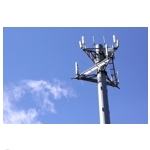 The FCC is proposing making 3850 MHz of spectrum at frequencies above 24 GHz available for wireless broadband use – spectrum the commission hopes will enable the U.S. to take a global leadership position in the development of fifth generation (5G) wireless communications. Much of the target spectrum is currently used by government users and satellite operators, who would continue to use the spectrum on a shared basis with wireless network operators.
The FCC is proposing making 3850 MHz of spectrum at frequencies above 24 GHz available for wireless broadband use – spectrum the commission hopes will enable the U.S. to take a global leadership position in the development of fifth generation (5G) wireless communications. Much of the target spectrum is currently used by government users and satellite operators, who would continue to use the spectrum on a shared basis with wireless network operators.
According to FCC Chairman Tom Wheeler, the target spectrum is six times greater than all of the commercial spectrum ever authorized by the commission – although he acknowledged at today’s monthly FCC meeting that the marketplace impact would not be commensurate because of “the laws of physics.”
As FCC Commissioner Mignon Clyburn explained at the meeting, spectrum above 28 GHz was once thought to be unsuitable for commercial communications because the wavelengths were too short and propagation loss was too high. But advances in beam forming antennas have caused the telecom industry to rethink that logic, she said. Clyburn also noted that the U.S. has gained experience using database technology to enable spectrum to be shared by multiple types of users, also paving the way for what the FCC is proposing.
FCC officials presenting at today’s meeting noted that some of the target spectrum would be well suited for small cells aimed at increasing capacity in high-traffic urban areas, while other spectrum could support higher-speed Wi-Fi, sometimes referred to as WiGig.
The FCC proposal, which takes the form of a notice of proposed rulemaking (NPRM) adopted at today’s meeting, calls for some 5G spectrum to be made available on a licensed basis, while other spectrum would be unlicensed. A third option, referred to as “hybrid licensing,” would make spectrum available for private enterprise and for mobile broadband.
FCC 5G Spectrum Proposal
The NPRM adopted at today’s monthly FCC meeting focuses on four possible 5G spectrum bands:
- 27.5 GHz to 28.35 GHz (to be known as the 28 GHz band), which officials said could be used for small cells and which the commission proposes to license on a county-by-county basis
- 38.6 GHz to 40 GHz (to be known as the 39 GHz band), another potential small cell band that would be licensed on a county-by-county basis
- 37-38.6 GHz (to be known as the 37 GHz band), which would be the hybrid band that could potentially be used by building and property owners and which also would be made available on a county-by-county basis
- 64-71 GHz, which would be available on an unlicensed basis and which could support WiGig
Officials noted that the NPRM also aims to encourage greater use of the 28, 37 and 39 GHz bands by satellite operators without unduly limiting terrestrial use of the spectrum.
FCC Commissioners Ajit Pai and Michael O’Rielly said they would have liked to see some additional spectrum bands included in the NPRM but did not oppose it.
Wheeler noted that the FCC plans to present the spectrum plans outlined in the NPRM at the upcoming World Radio Communications Conference, with the hope of persuading other countries to adopt the same band plan.
The U.S. leads the world in 4G technology development, in part because it freed up spectrum before some other countries did, Wheeler said. “Continued U.S. leadership requires international coordination. . . It requires harmonization, at least in our hemisphere,” he added.

